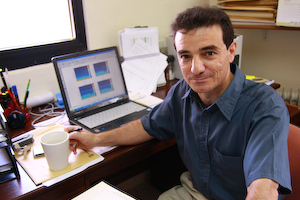What would have once seemed like an object straight out of a sci-fi film, is now a device that could help millions. Here, Professor Kenneth P Camilleri gives us an exclusive insight into the Brain-Machine Interface and how Malta is furthering the study.

Prof Ing Kenneth Camilleri
The human body is an amazing machine; one that does so much with very little thought or effort. Yet some of the things that are crucial in shaping and defining our individual reality, are often the things we take for granted.
Think for a second about the fact that you can read this. Your eyes are bending light and creating an image that your brain can read without a second thought. Think, also, of the fact that you are now breathing, thinking, digesting and pumping blood without making much of it. But how often do we stop and think what would happen if that had to stop?
Much like the aforementioned examples, communication and control are two devices most of us use in our daily lives. We pick things up, get dressed, hold a fork and clean ourselves, all this by using our hands which we have the the ability to control through our brain. And what about putting our point across? We talk, type and gesticulate continually.
For some people, however, that is impossible. But a new machine is now set to change all that.
“A Brain-Machine Interface (BMI) gives a person the ability to communicate with and control machines using brain signals instead of peripheral muscles,” explains Professor Kenneth P Camilleri, from the Department of Systems and Control Engineering who, along with his team, has been working on developing new algorithms to extract useful information from the brain signals.
“BMIs allow people with severely restricted mobility to control devices around them, increasing the level of independence and improving their quality of life,” he continues. “Moreover, BMIs may also be used by healthy individuals in various industries, such as in gaming, as an alternative means of communication and control. And they are expected to become ubiquitous in the future, too.”
The way these machines work is quite simple in theory: By acquiring the electrical brain activity using electroencephalography (EEG) electrodes (such as those evoked by flickering visual stimuli), BMIs can then translate that information into a concrete actions, such as switching on a television set, or typing on a computer.
“We have developed BMIs whereby flickering visual stimuli are associated to commands, and the EEG signals are processed to detect the command associated to the brain pattern,” continues Professor Camilleri. “We have applied our BMI work to
three different practical applications that demonstrate their effectiveness, namely as a Brain-Controlled Music Player (dubbed the ‘Walnut’), a brain-controlled motorised bed, and a brain-controlled keyboard.
“Moreover, Maltese researchers’ experience and growing interest in BMIs provide an opportunity to innovate and break new ground in this area,” he adds. “We have been studying computational methods to process brain signals acquired from the scalp for over 12 years, and we have developed new algorithms that may extract useful information from the brain’s signals.”
Among the many individuals working with Professor Camilleri, are Dr Tracey Camilleri and Dr Owen Falzon, both of whom are contributing to this work on Brain-Machine Interfaces. In addition, Dr Tracey Camilleri also supervised Ms Rosanne Zerafa, who worked on the brain-controlled music player, while Dr Owen Falzon supervised Mr Norbert Gauci on the brain-controlled motorised bed.
As RIDT, we are now trying to get funding for this fantastic research because, as Professor Camilleri puts it, “Projects such as these require a lot of money, particularly for more research resources for this activity and to recruit doctoral students and postdoctoral researchers to work in this area.”
The work now continues, but one thing’s for certain: No one knows what the future of BMIs will hold, but if the past is of any guarantee, we can safely assume that it will be extraordinary.
You too can be part of this fascinating world of research by supporting researchers in all the faculties of the University of Malta. Please click here for more information on how to donate to research of this kind through the Research Trust (RIDT).
